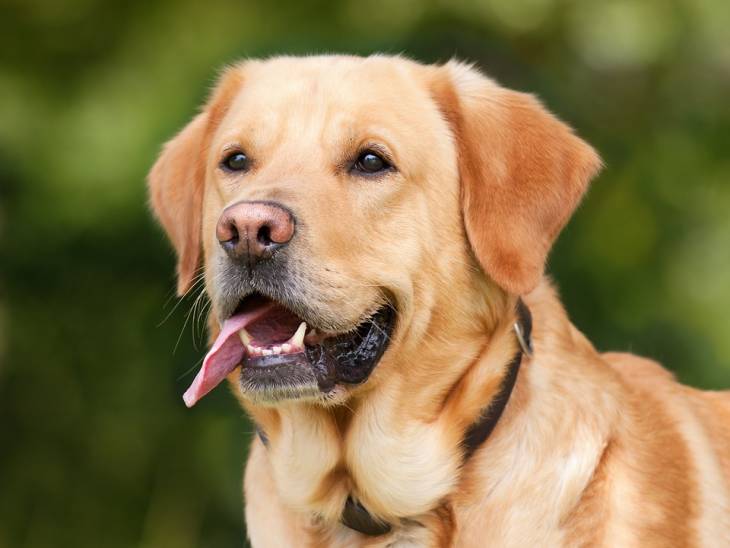Pet Disaster Preparedness (What to do if Disaster Strikes)
Nobody likes to think about having to suddenly evacuate their home. But it can be an unfortunate fact of life for some. If you have a dog, this rough experience has the potential to be even more harrowing, unless you’re prepared to help your pooch. Here’s how to do so.
The Importance of Pet Disaster Preparedness
To most of us, dogs aren’t just pets – they’re family members, which is why it\’s important that they aren\’t looked upon as an afterthought if disaster strikes. We\’ve all heard stories of families losing their dog in the aftermath of a fire or another house-bound disaster. These tales gut us because it makes us think about our own four-legged friends.
Our love of our dogs and the feelings that overwhelm us at the thought of something terrible happening to them is the primary reason why it’s imperative that you have a pet disaster plan in place. If you don’t, you may find yourself utterly wracked with the pain of loss and the guilt stemming from the thought that you should have done something.
A Video Overview of Pet Disaster Preparedness
There’s quite a bit of work that you’ll need to take care of if you want to provide your pooch safety and protection in the event of a disaster. This video does a good job of providing an overarching view of some of the ways you can help your dog if horrific stuff does occur. Hopefully, it won’t, but you can ever be too careful.
The First Steps to Building a Pet Disaster Plan
There are a lot of components that should be in place when you start devising a pet disaster plan. However, the initial steps that constitute a solid plan involve things that you either should have done or may have done already. Think of these first forays as giving your pooch a head start on being re-united with you.
The first thing you should always do is furnish an ID on your dog. All you need to do here is provide your pooch with a collar with a customized tag dangling from its bottom. It’s a simple, inexpensive step, but it’s surprisingly not omnipresent – studies show that only one-third of pet owners use ID tags.
Frankly, this number is inexcusably low. An ID tag will not only help re-unite you with your dog in the wake of a disaster, but it could also foster a reunion if your dog decides to be a renegade and break from your backyard. This is especially an issue if you have an intact (read: non-neutered) male dog or a pooch that isn’t getting his exercise needs met.
Picking up a collar and making a tag merely requires you to pay a visit to your local pet supply store. Most of these shops will have tag-making machines that allow you to put pertinent info on a thin piece of metal. As far as info goes, all the tag needs are the dog\’s name and your phone number.
Another more elaborate yet simple step you can take to prep for disaster is to have your dog microchipped. As the name suggests, this process involves the insertion of a tiny chip under your pooch’s skin, usually between the shoulder blades. These chips are read by a scanner, which in turn reveals dog ownership info.
While the microchipping process doesn\’t have to be performed by a vet, it is advised that a vet handles the procedure. Typically, the microchipping process runs about $50 on its own, but this amount could decrease if you\’re getting the procedure done in conjunction with his annual visit.
This may be a component you won’t have to worry about doing. Some shelters and reputable breeders microchip their dogs before giving them to their new families. You may want to check with your vet to see if your pooch is already microchipped; if so, take the time to properly register the pooch.
Microchipping a Dog in Action
The notion of inserting a chip underneath your dog’s skin may sound a little freaky if you’ve never done it before. However, it’s an easy procedure that’s no different than your pooch getting a vaccination. As this video demonstrates, there’s really nothing to it – which makes it an essential component to protecting your pooch.
Planning a Place for Your Pooch to Stay
If something suddenly urgent and devastating takes place in your home, chances are your family is going to be put out for a while. This is obviously a hassle, but it’s generally not a huge issue if you’re just dealing with humans. However, this may be a little tricky if there’s a pooch involved.
As such, you should always have a record of pet-friendly hotels, boarding facilities, relatives, or friends that would be willing to welcome your dog as well as you. Preparing this in advance will make your transition to temporary digs much more efficient. You won’t be in the right mind frame to handle this step after a disaster.
The importance of executing this step is critical because it can come in handy for house-bound situations that aren’t worse-case scenarios. Universal fears like fires and hurricanes are scary enough to organically rise to the forefront, and rightly so. But they aren’t the only emergencies that demand your attention.
Some home-based disasters like flooding, a vermin infestation, or a sudden need to massive home repair aren\’t necessarily life-threatening to you or your dog. However, that doesn\’t make preparing for these types of scenario less important. Having a list of temporary places for you and your dog will go a long way to mitigating stress.
Whatever you do, never leave your dog behind in any circumstances, even if you waffle on this step prior to disaster striking. Remember, your dog isn’t just a pet – he’s a family member. Leaving him behind while you flee a disaster is extremely cruel and inhumane if viewed through this context.
Preparing for Vet Visits Beyond Your Neighborhood

Hopefully, you will never have to experience an evacuation-driven disaster. If you do, you\’ll hopefully never have to be displaced beyond your town\’s borders. However, there may be times where a disaster is so widespread, you have no choice but to be abruptly displaced from your community.
Because of this situation, it’s important that you have a record of emergency veterinary facilities located outside your community. If your neighborhood is being displaced, you should assume that the emergency vet clinic down the road is also being displaced.
This step shouldn’t be taken for granted. After all, just because you were able to lead your dog to safety doesn’t necessarily mean he’s 100 percent fine. He may start showing signs of illness or injury pertaining to the disaster; things that may need attention sooner than later.
Your best bet here is to consult your local vet beforehand to see if he or she has a recommended facility to visit in the aftermath of a large-scale disaster. You can also check to see if your vet has a contingency plan of remote operation if the unthinkable does happen.
Crafting a Doggie Disaster Kit
Making a first aid or an emergency kit for humans is a no-brainer. The need to craft a special emergency kit for your pooch, on the other hand, may be something that’s easy to overlook. However, making a kit for your four-legged friend is an essential component in the quest to help him emerge from a disaster unscathed.
Some of the components of a proper dog disaster kit are not all that dissimilar from what you would prepare for the humans in your brood. For instance, you should make sure your little buddy has food and water to last for a minimum of five days. You should also have their medications and basic first-aid materials packed.
Other components are decidedly canine related and larger in size, such as leashes, harnesses, and transport carriers so that your pooch can have a place to sleep. You’ll also want to make sure the carrier is as comfortable for your dog as possible, as he may have to stay in there for long stretches of time.
You’ll also want to provide several elements that can be helpful reuniting tools in the event that you get separated. This would include things like providing photos of you and your pooch and written descriptions of him. These elements would serve as proof that you are indeed his rightful owner.
Finally, you’ll want to make sure that you provide care instructions should you need to board or foster your dog for an extended period of time. Writing out your pooch’s feeding schedules, behavioral tendencies, medical conditions, and vet name will make sure he will continue to be loved even in the direst of circumstances.
Other items you may want to have in your kit include paper towels, newspapers, and plastic bags so your dog can still do his business in a sanitary manner. It may also behoove you to bring along some grooming items if you have a high-maintenance breed.
How to Act with Your Dog in the Face of Danger

If disaster strikes your home, it almost goes without saying that things are going to be harried. As such, stress-fueled emotions are going to be strongly present. Yet as any disaster preparedness clinic will tell you, it’s important that you remain calm – and that is especially the case while dealing with your pooch.
Remember – this is a stressful time for your dog as well. Not acting calm and reassuring will only exacerbate their nervous energy. This will only make dealing with them in the aftermath of a disaster more difficult than it may already be.
As such, be sure to take the time to provide them a measure of comfort and reassurance that things are going to be okay. This could be something as simple as just pausing for a minute and giving them a kind hug. With that being said, if your dog is showing you signs that he doesn’t want to be comforted, don’t force the issue.
Even if your dog is on edge, never give him any tranquilizing substance to help him “take the edge off.” One of the reasons why he’s tense is that he, just like you, is in survival mode and is relying on instincts to see things through. Subduing him inhibits this instinct, and actually will make it much harder for him to operate in the face of danger.
Handling Different Disaster Types
No two disasters are alike, even though they all could potentially end with devastating results. Because of this, it\’s important to note that tending to your dog\’s needs differs based on the type of disaster. Even though the endgame of providing reunified safety is the same, it’s vital to be mindful of these disparate approaches.
If you’re in an area subject to natural disasters like tornadoes or hurricanes, it’s important that you “train” your dog to by getting him to participate in drills. This way, they’ll know where to go if the real thing happens. You’ll also want to be aware of their favorite hiding spots in case they aren’t properly prompted, so you can go back and pick him up.
The area that you’ll want to lead your dog to depends upon the nature of the potential disaster. For floods, you’ll want to make sure he’s leashed and taken to the highest ground possible. You’ll want to go to a windowless room during a hurricane, and your designated “safe room during a tornado.
In the event of a tornado or hurricane, it’s important that you crate your pooch as quickly as possible. This will give your pooch an extra layer of comfort and protection from outside elements. It may be a good idea to place the crate under durable and heavy furniture during this time.
If a wildfire is slowly encroaching your neighborhood, don’t wait for the eventual call for evacuation – just go. This proactive maneuver will help mitigate the chaos that may otherwise be waiting for you if you wait for the official word. This should be something you do even if you’ve researched where to go and where to stay.
Picking Up the Pieces After Disaster Strikes

Those first few hours or days after a disaster can feel as surreal as they are devastating. If you’ve taken on damage as a result of the disaster, you know you have a long road ahead of you to jump back onto the path of normalcy. If you’re a dog owner, it’s important that this path has plenty of room for your pooch.
Once you’ve been reunited with your dog – or if he never left your side during the disaster – it’s important that you help him get reacquainted with your home and neighborhood. Elements key to creating familiarity for a dog like scents may have changed because of the disaster. Walking him through the area will help re-orient him.
It\’s also very crucial that you keep your dog\’s inherent nature in mind as you and he deal with the recovery process. Remember, he\’s a curious critter that will try to figure out the lay of the land by exploring on his own. This could spell disaster in the wake of a catastrophe.
In a disaster area, you may experience dangerous debris like downed power lines or contaminated water. In some situations, like floods, your dog may be privy to unusual encounters with reptiles or other animals uprooted from their natural habitat. It’s imperative you make sure you’re guiding your pooch away from these hazardous environs.
It’s in your best interest to make sure your dog avoids these potential issues for the sake of your own health. There are a few canine-to-human conditions that could increase in propagation after disaster hits, such as ringworm, leptospirosis, or even rabies. Of course, some of these diseases can be neutralized if your dog\’s shots are up to date.
Because of this, it’s extra important that you take additional precautions when handling your dog until things return to their normal state. For instance, you should avoid letting your dog give you “kisses” to your face or hands. You should also be mindful of washing your hands whenever you touch the dog, handle his food, or pick up his waste.
It’s also worth noting that a disaster and the radically changed landscape it can bring may cause your dog to be unusually aggressive or defensive. This isn’t because your dog went crazy – it’s merely due to your pooch’s survival (and “survival of the fittest”) instincts kicking into high gear.
These tendencies should subside once things return to normal, and he\’s settled back into a familiar environment. However, it\’s wise to monitor his behavior until it finally shifts back to a normal state. If it continues to persist after things are back to the way they were, contact your vet immediately.
You Can Work Through This Together!
Nobody wants to deal with a disaster. But if you and your dog are forced with having to do so, you can take comfort in knowing that your dog will remain loyal to you throughout the process. Yes, he may get separated from you during the process, but bear in mind that’s not his intention at all.
Dogs are known as “man’s best friend” for a reason, and that reason has great potential to lift your spirits during times of trouble. As such, the least you can do for him is to prepare for his protection and safety if the unthinkable does occur.
Sources:
Your Plan Should Include All Family Members
Why Should My Dog Wear a Collar and Tag?
Dog Tags 101: What You Need to Know to Keep Your Pet Safe, Colleen Oakley, June 13, 2012
Dealing with Dogs that Run Away, Dr. Nicholas Dodman, August 25, 2015
Microchipping Your Dog or Cat, Sandy Eckstein
Fort McMurray Fire Prompts Evacuation Order for Entire City, Sarah Rieger and Rhianna Schmunk, May 3, 2016
The 10 Most High-Maintenance Dog Breeds, Kim Campbell Thornton, April 2, 2012
Keeping Pets Safe in a Disaster

